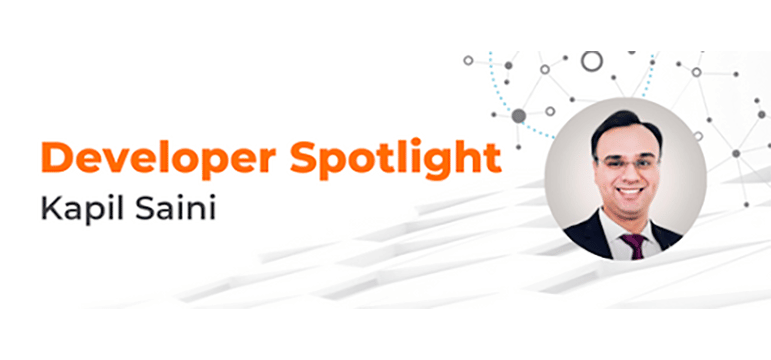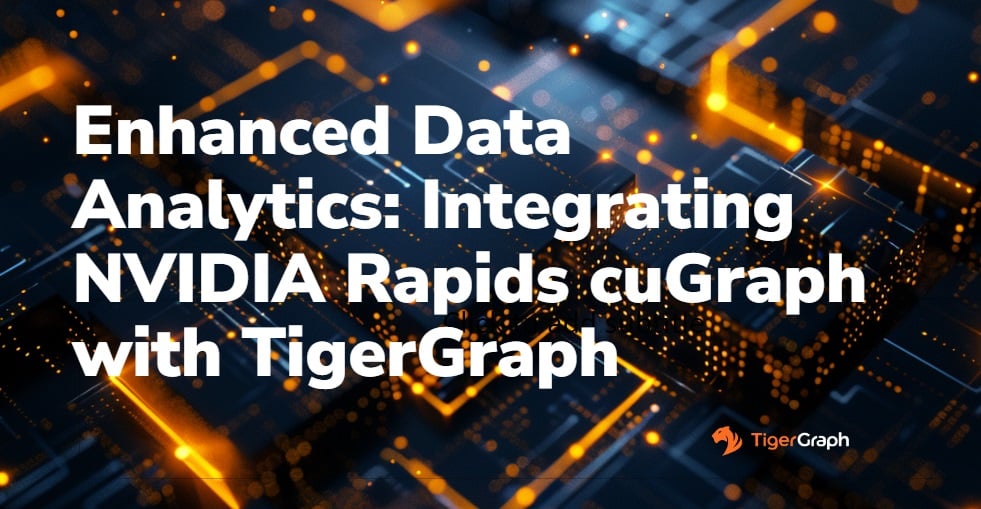Developer Spotlight: Kapil Saini
- Blog >
- Developer Spotlight: Kapil Saini

TigerGraph Developer Spotlights allow you to get to know people using TigerGraph around the world to create powerful connected data solutions answering countless use cases.
Meet Kapil Saini
Learn about Kapil Saini, Senior Solutions Architect at Kearney, and how his journey from working with self-driving cars led him to find the power of graph databases!
Tell us a little bit about yourself, where you are from, and what you are currently working on.
I am a native of Punjab, a state in the northern part of India, but currently located in Mysore, a heritage city in Karnataka, India. I graduated from Punjab Technical University with a computer science and engineering degree in 2007 and now have close to 16 years of experience in the software industry. I have worked with the length and breadth of technology, domains, and many different segments. Towards the beginning of my career, I worked with content management applications, and from there, I went on to build eCommerce solutions.
I then moved to another strategic unit within the same organization I was working with to work on autonomous vehicles. There I worked on developing AI-based self-driving car modules using deep learning, sensor fusion, computer vision, and other tech stuff. Currently, I‘ve been working diligently with graph databases, primarily with TigerGraph and a few other key technologies, to develop a logistics solution to optimize fleet utilization, which is a huge inefficiency in the logistics ecosystem. We are leveraging TigerGraph to create a digital twin of the logistics domain and coming up with very niche solutions to problems that are too complex to be solved by regular mathematical models or other IT solutions.
What interested you in TigerGraph?
Before working with graph databases, I worked with autonomous vehicles (self-driving cars), indoor robots, and other deep-learning AI-based solutions. One thing that always confused me was how the solutions were actually being generated. It seemed like more of calculated guesswork. Then at one point in time, I came across graph-based solutions, and I realized that graph has equal potential as deep learning technologies. Graph will give you much more control over how the solution is generated and its features, and you can really tweak it to zero down on the solution. I initially started with a non-TigerGraph graph database when I was working with a relatively short dataset, and that was fine, but the moment you’re looking into an enterprise-wide scale where there is a large volume of data, a lot of computations and a lot of analytics that need to be generated, nothing came close to TigerGraph. So this shift from deep learning and AI to graph databases happened primarily because of the use cases we were trying to solve. We thought AI and ML were helpful, but graph databases are more realistic in modeling such problem statements.
With your extensive background in technology, what is your perspective on relational databases vs graph databases?
Like every other thing, relational databases have their pros and cons. When it comes to building object-oriented applications where the purpose is essentially to maintain state and not to infer relationships, relational databases are a wonderful choice. They are definitely good when it comes to the transactional nature of applications. I believe that is where relational databases still have the upper hand. However, the ecosystem is changing. People are more interested in finding value from the data that they already have. That is where the graph database comes in and gives you the power to discover deep patterns in the data. Graph databases create a more significant impact and allow businesses to find hidden value in their data. That’s where I think TigerGraph or any graph databases have the upper hand.
What has been your favorite graph-based project that you have worked on so far and why?
My favorite project is the one I am working on right now, but I can’t share too many details. However, my second favorite project would be an eCommerce acquisition portal for the National Football League (NFL). I worked on rebuilding a whole eCommerce platform for the NFL back in 2011/2012, and I got to work with Scala, Microservices, and many of the niche technologies that were out there at that time. This project was built from scratch, from writing the fundamental pieces of code blocks all the way to production and ensuring it was catering to all NFL viewers. The technologies we chose were very new to the market, and there wasn’t a lot of help available, but we got to see the power of the technology really shaping. Similarly, with the project I am working on right now using TigerGraph, I can see the immense value of the product that could not have been possible if it weren’t for these new emerging technologies.
What’s been the most influential resource for your career?
I’ve been more inspired by the people I’ve worked with than the resources out there. The technology, the tech stack, and books are one aspect, but the people around you are the real motivators who can really make a difference. There have been many leads that I have worked with in my career that really inspired me. They taught me how to look at things from a different perspective and how to build valuable applications. They also showed me how to take my work to another level so that others would find inspiration from it as well. So to answer the question, my teammates and the leads I have worked with have influenced my career the most.
If you were going to write a book, what would it be about?
Something that I am really interested in is food sciences. I would like to write a book depicting the origins of food and the value that food had compared to what we eat now. I would love to explore how food originated, its cultural meaning, and how that has shifted over time. I would write a book on this subject with the hopes it could potentially connect people with the food they eat, and maybe that would lead to people finding food more enjoyable and meaningful.
Anything else you want to share about yourself?
I think the most important thing is to love what you do. I’ve been in the computer engineering world for more than 15 years, and there hasn’t been a day that I felt I should not be here. So whatever you are doing, whether you are a cook, a gardener, an engineer, or a doctor, whatever it is, love what you do. Nothing will inspire and keep you at peace like a day of happy work. And please don’t forget to be with your family, that should be the most important thing in your life.
Connect with Other Developers
There are hundreds of TigerGraph developers talking daily in TigerGraph’s developer chat. If you would like to get help from others, discuss ideas, or just meet other graph enthusiasts, check out TigerGraph’s Developer Chat!












